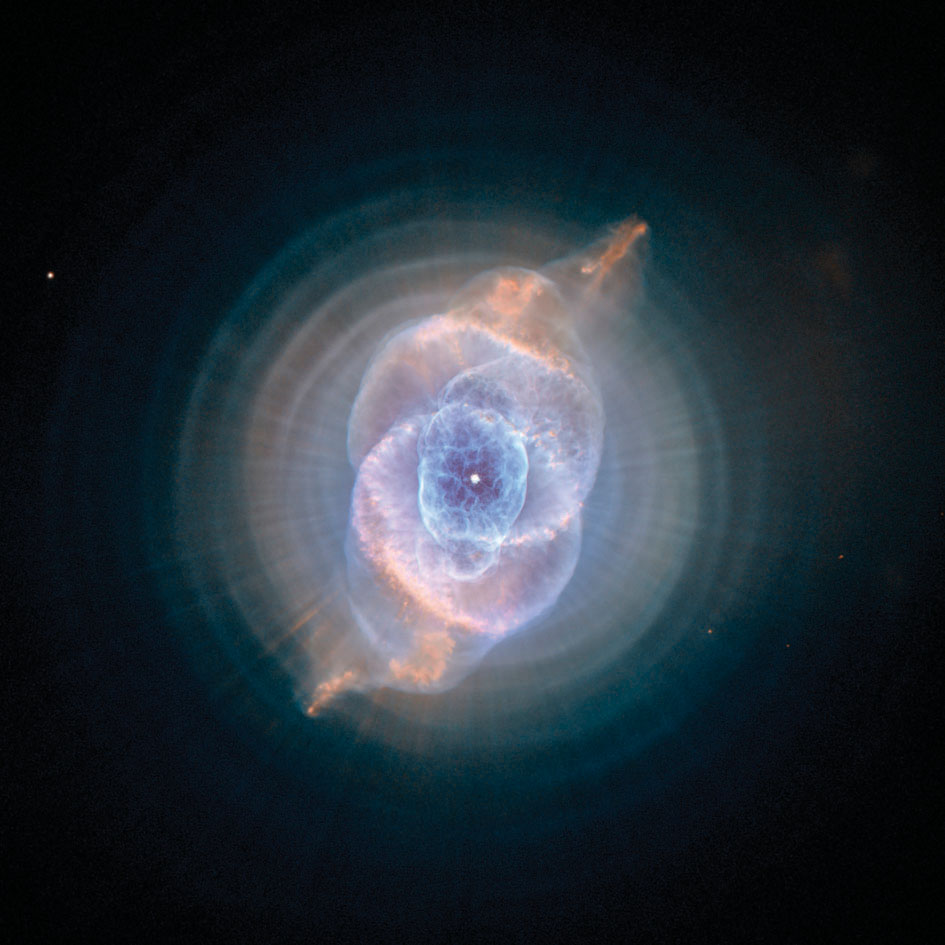
Figure 20-5: R I V U X G
The Cat’s Eye Nebula Named after its shape, this nebula was first discovered in 1786. The exposed core of the central star—clearly visible in the image—is about 10,000 times more luminous than the Sun, and its intense ultraviolet radiation powers the nebula by ionizing its gas. While the nebula is hotter than the Sun, the gas is too diffuse to shine by thermal radiation as the Sun does. Instead, like all planetary nebula, the visible light comes from emission lines: After electrons are excited to higher energies, photons are emitted as the electrons cascade down to lower energies in the gas’s atoms. As with many planetary nebulae, the mechanisms shaping the intricate visible structures are not well understood.
The Cat’s Eye Nebula Named after its shape, this nebula was first discovered in 1786. The exposed core of the central star—clearly visible in the image—is about 10,000 times more luminous than the Sun, and its intense ultraviolet radiation powers the nebula by ionizing its gas. While the nebula is hotter than the Sun, the gas is too diffuse to shine by thermal radiation as the Sun does. Instead, like all planetary nebula, the visible light comes from emission lines: After electrons are excited to higher energies, photons are emitted as the electrons cascade down to lower energies in the gas’s atoms. As with many planetary nebulae, the mechanisms shaping the intricate visible structures are not well understood.
(NASA, ESA, HEIC, The Hubble Heritage Team STScI/AURA)